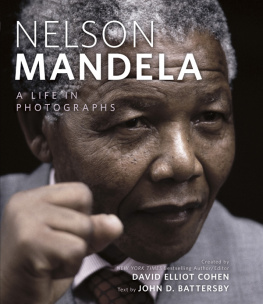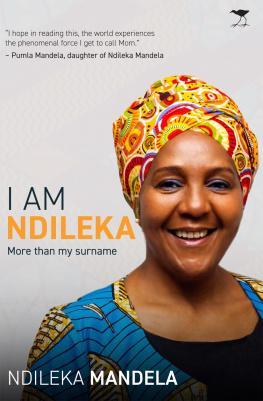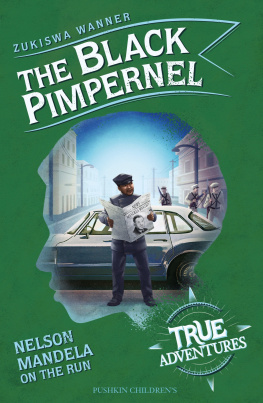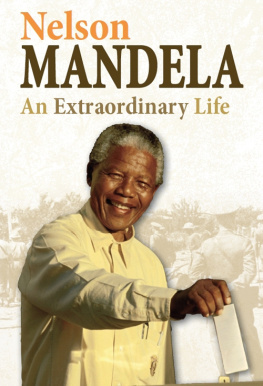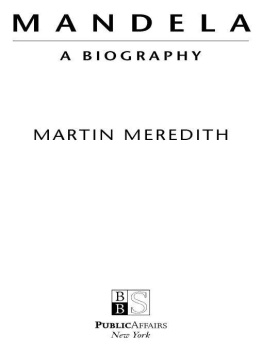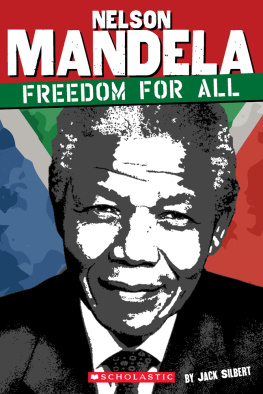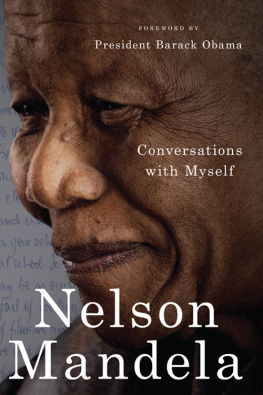April 20, 1964
Nelson Mandela delivered this statement from the dock at the opening of the defense case in the Rivonia Trial. At the conclusion of the trial, Mandela, Walter Sisulu, Govan Mbeki, Raymond Mhlaba, Elias Motsoaledi, Andrew Mlangeni, Ahmed Kathrada, and Denis Goldberg were convicted. Mandela was found guilty on four charges of sabotage, and like the others was sentenced to life imprisonment.
I am the First Accused. I hold a bachelors degree in arts and practiced as an attorney in Johannesburg for a number of years in partnership with Oliver Tambo. I am a convicted prisoner serving five years for leaving the country without a permit and for inciting people to go on strike at the end of May 1961.
At the outset, I want to say that the suggestion made by the state in its opening that the struggle in South Africa is under the influence of foreigners or communists is wholly incorrect. I have done whatever I did, both as an individual and as a leader of my people, because of my experience in South Africa and my own proudly felt African background, and not because of what any outsider might have said.
In my youth, in the Transkei, I listened to the elders of my tribe telling stories of the old days. Amongst the tales they related to me were those of wars fought by our ancestors in defense of the fatherland. The names of Dingane and Bambata, Hintsa and Makana, Squngthi and Dalasile, Moshoeshoe and Sekhukhuni, were praised as the glory of the entire African nation. I hoped then that life might offer me the opportunity to serve my people and make my own humble contribution to their freedom struggle. This is what has motivated me in all that I have done in relation to the charges made against me in this case.
Having said this, I must deal immediately and at some length with the question of violence. Some of the things so far told to the court are true and some are untrue. I do not, however, deny that I planned sabotage. I did not plan it in a spirit of recklessness, nor because I have any love of violence. I planned it as a result of a calm and sober assessment of the political situation that had arisen after many years of tyranny, exploitation, and oppression of my people by the whites.
I admit immediately that I was one of the persons who helped to form Umkhonto we Sizwe and that I played a prominent role in its affairs until I was arrested in August 1962 I, and the others who started the organization, did so for two reasons. Firstly, we believed that as a result of government policy, violence by the African people had become inevitable, and that unless responsible leadership was given to canalize and control the feelings of our people, there would be outbreaks of terrorism which would produce an intensity of bitterness and hostility between the various races of this country which is not produced even by war.
Secondly, we felt that without violence there would be no way open to the African people to succeed in their struggle against the principle of white supremacy. All lawful modes of expressing opposition to this principle had been closed by legislation, and we were placed in a position in which we had either to accept a permanent state of inferiority, or to defy the government. We chose to defy the law. We first broke the law in a way which avoided any recourse to violence. When this form [of defiance] was legislated against, and then the government resorted to a show of force to crush opposition to its policies, only then did we decide to answer violence with violence.
But the violence which we chose to adopt was not terrorism. We who formed Umkhonto were all members of the African National Congress, and had behind us the ANC tradition of nonviolence and negotiation as a means of solving political disputes. We believe that South Africa belongs to all the people who live in it, and not to one group, be it black or white. We did not want an interracial war, and tried to avoid it to the last minute. If the court is in doubt about this, it will be seen that the whole history of our organization bears out what I have said, and what I will subsequently say, when I describe the tactics which Umkhonto decided to adopt. I want, therefore, to say something about the African National Congress.
W e had to accept a permanent state of inferiority or defy the government. We chose to defy the law.
The African National Congress was formed in 1912 to defend the rights of the African people which had been seriously curtailed by the South Africa Act, and which were then being threatened by the Native Land Act. For thirty-seven yearsthat is, until 1949it adhered strictly to a constitutional struggle. It put forward demands and resolutions; it sent delegations to the government in the belief that African grievances could be settled through peaceful discussion and that Africans could advance gradually to full political rights. But white governments remained unmoved, and the rights of Africans became less instead of becoming greater. In the words of my leader, Chief [Albert] Lutuli, who became president of the ANC in 1952, and who was later awarded the Nobel Peace Prize:
Who will deny that thirty years of my life have been spent knocking in vain, patiently, moderately, and modestly, at a closed and barred door? What have been the fruits of moderation? The past thirty years have seen the greatest number of laws restricting our rights and progress, until today we have reached a stage where we have almost no rights at all.
Even after 1949, the ANC remained determined to avoid violence. At this time, however, there was a change from the strictly constitutional means of protest which had been employed in the past. The change was embodied in a decision which was taken to protest against apartheid legislation by peaceful, but unlawful, demonstrations against certain laws. Pursuant to this policy, the ANC launched the Defiance Campaign, in which I was placed in charge of volunteers. This campaign was based on the principles of passive resistance. More than 8,500 people defied apartheid laws and went to jail. Yet there was not a single instance of violence in the course of this campaign on the part of any defier. I, and nineteen [of my] colleagues, were convicted for the role which we played in organizing the campaign, but our sentences were suspended mainly because the judge found that discipline and nonviolence had been stressed throughout. This was the time when the volunteer section of the ANC was established, and when the word Amadelafuka was first used. This was the time when the volunteers were asked to take a pledge to uphold certain principles. Evidence dealing with volunteers and their pledges has been introduced into this case, but completely out of context. The volunteers were not, and are not, the soldiers of a black army pledged to fight a civil war against the whites. They were, and are, dedicated workers who are prepared to lead campaigns initiated by the ANC to distribute leaflets, to organize strikes, or do whatever the particular campaign required. They are called volunteers because they volunteer to face the penalties of imprisonment and whipping which are now prescribed by the legislature for such acts.

FREE MANDELA: Following Mandelas arrest on charges of incitement in August 1962, these women joined Winnie Mandela on the steps of city hall in Johannesburg to demand his immediate release. They also chanted slogans denouncing Dr. Hendrik Verwoerd, the prime minister and perceived architect of apartheid. Verwoerd survived two assassins bullets, delivered point-blank to the face in 1960, but in 1966, he was stabbed to death by a mixed-race parliamentary messenger while sitting in his seat in Parliament as the bell rang for the start of the days session.
Next page
